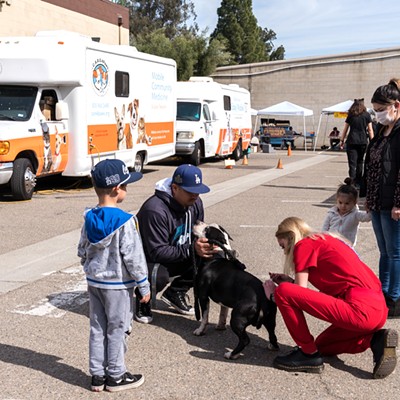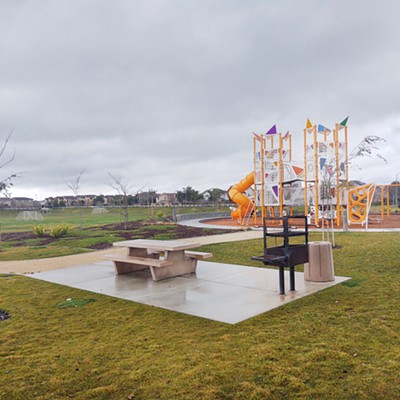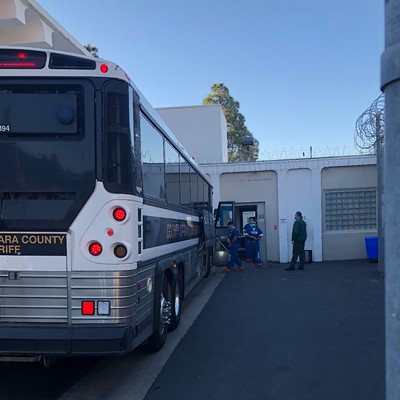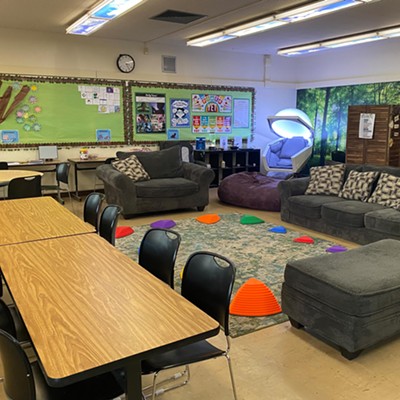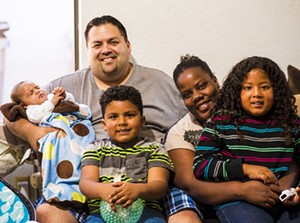
A cacophony only six children can make bounces around the Rojases’ family room. It’s movie time, and Sherena Rojas is calmly directing the organized chaos of movement into a semi-seated row on the checkered carpet below the television.
After the children plop down, she doles out a mid-afternoon snack: little bags of cookies. The opening lines of the animated Hotel Transylvania quiet the humming voices to a soft murmur, but only momentarily, as restlessness inevitably stirs the kids to rise again.
Six children between the ages of 7 years and 3 months living together in a one-story, three-bedroom house sounds like a circus, but it doesn’t feel like one. It’s a coordinated abundance of energy that’s natural for Sherena and her husband Armando, 32, to be around, participate in, and control. They come from big families—she has seven brothers and sisters, he has eight—and their love flows as easily as their words.
Not all six kids are theirs: Equal portions of biological and foster children roam the household’s carpets. The couple’s ability to impart a combination of love and discipline on every one of those kids is what makes them great foster parents, according to Constance Zatorski of Legacy Behavioral Services.
“They just are able to have that emotional connection,” Zatorski says. “Any child that comes into their family, they are almost immediately able to love … they don’t force it. They just kind of let it happen.”
Zatorski says the Rojases are one of the best families Legacy works with. She recently placed a couple of new kids with the family, and those kids are already running around with the rest of the crew—not separately, but side by side.
Legacy places Santa Barbara County foster children with 18 different families, and Zatorski said she’s always on the lookout for more. Legacy and a handful of other agencies—such as Pathways, Family Care Network, and Angels Foster Care—work with the county to find qualified families for children who need foster homes.
Delfino Neira, the county’s deputy director for adult and children services, says between 60 and 100 new foster families are needed each year in the county. That number mirrors the number of children the county separates from their parents every year.
“The kids that we remove are the worst cases … we’re certainly not going to return a child to an unsafe situation,” Neira says. “The parent has abused or neglected that child to the point that they can’t safely be in the home anymore.”
The majority of those situations stem from some sort of substance abuse, and while the county often can and does try work with the parents to remedy the situation, that process can take time. Sometimes, the problems prove impossible to fix. If there’s not another family member willing to take on the extra responsibility of a child, then that kid needs somewhere else to go.
Neira says 30 to 35 percent of the children the county removes are just temporary foster placements and end up being able to go back home. For the rest, their home situation is too bad to return to.
The need for foster homes isn’t new.
It’s constant.
There’s always a need.
There’s always a shortage.
Connecting needs
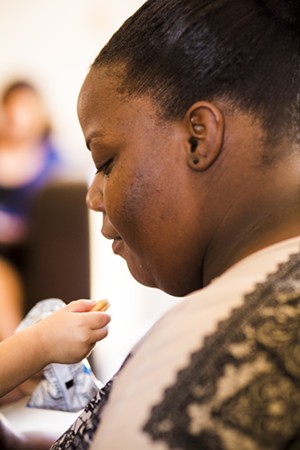
Sherena has her black hair pulled back into a short ponytail. Lying on the floor, she plays with a toddler the couple has fostered for a year and a half. He’s what Zatorski calls “fully attached.” He’s completely incorporated into the Rojas family. For all intents and purposes, he’s a son and a brother, and right now, the family is beginning the process of trying to adopt him. Sherena smiles and laughs, letting the little boy climb on her back, where he’s content for about two seconds before clambering to a spot on the floor.
The Rojases’ 5-year-old son Dezmin, one of their biological children, sits down next to his mother and begins to play with the toddler. Armando is cradling the couple’s newborn on the couch, and Devin, their 7-year-old, is coordinating very bouncy activities on the 12-foot-wide trampoline in the backyard.
Everything just fits.
So far, seven foster children have been placed with the family over the last two years. All but two—their first placement and a teenager who needed more services than Legacy and the Rojas family could provide—have been able to go back home to biological parents.
“It makes us feel like we’ve done our part,” Sherena said. “It feels good to see a child re-unified with their parents … and hopefully that’s where they stay, because that’s where they should be, with their parents.”
Before Sherena and Armando decided to become foster parents, they wanted to have another child. They had two at the time, and Sherena was told she wouldn’t be able to have another one. Without the money to adopt, the couple looked into foster care as a way to expand their family that could potentially lead to a permanent addition.
Now they have a revolving door policy: When there’s space in their home and Legacy has a child it needs to place, Zatorski calls them.
“My mom was like that when I was a kid; she was like the neighborhood mom,” Sherena says. “Everyone would come over to my house.”
Sherena’s job in medical transcription enables her to spend time caring for the children during the day because she can work after they go to bed. Armando commutes to Santa Barbara for work in the service industry, but as a manager, he also has the ability to work from home sometimes.
Sherena floats easily between the children and doesn’t get flustered when the two toddlers get upset with one another, simply telling them in a soft, firm voice to play nicely. They listen, and she rewards each of them with words of praise.

“You did a good job, high five,” she says to one and then the other, giving both high fives before lifting her head to speak to another child about playing safely on the trampoline.
“They’re so innocent,” she says as she points to the newest toddler entrusted to her. “For instance, why should he have to feel hurt and sad and anger and neglect?”
She attempts to further explain why she and Armando do it, but it’s hard to put into words.
“Their love is so pure,” she says, continuing her train of thought. “They don’t care if you take them to Magic Mountain and spend a million dollars, all they want is your love.”
Armando adds to what his wife is saying. In his mind, providing a safe and welcoming environment to those who don’t have one carries on a tradition his mother started. When he was growing up, his mother was always feeding and caring for kids in the neighborhood whose parents had vanished for the day or evening. For him, it’s important that his kids grow up with that same sense of selflessness and community, that same humility about life and what’s important.
“Personal experiences lead to current experiences,” Armando says as he looks out the sliding glass door to check on the kids. “[I want them] to be humble; to understand—in a way, to help them understand—how good their life is.”
Placement challenges
Things, of course, don’t always run smoothly when a stranger is added into the familial mixing bowl. Sometimes the situation doesn’t work out, as was the case with a teenage girl who stayed with the Rojas family for about two months.
“After that, the boys didn’t want to have another foster child, but after a couple of months they started asking again,” Armando says.
The boys generally enjoy having foster kids come stay with them. Dezmin, a chatty 5-year-old who has a quick smile and short curly hair, says he likes foster kids because they’re fun to play with. Every new child who comes into the house brings along a different set of challenges, but the teenager just needed more than the family could give.
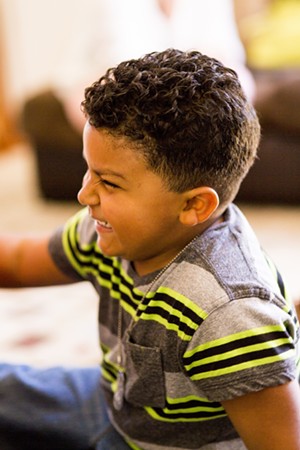
“We cared a lot for her, but it was just that she didn’t care for herself,” Armando says. “She didn’t understand why we cared for her. She would actually ask me, ‘Why do you care for me?’”
He says he sometimes wonders what happened to her and how she’s doing.
Zatorski says the teen ended up in a group home because she needed the services it could provide. She tries to explain the reasoning behind why it was such a challenging situation—it wasn’t that the teen disliked the Rojas family; she just wasn’t following the rules set by both Legacy and the family.
“It’s never an easy road,” Zatorski says. “But with that connection, it’s going to be easier. Any child that’s placed with a family is going to have issues.”
For now, the Rojas family is going to stick with foster children who are the same age or younger than their oldest child, Devin.
Legacy has a variety of families from which to choose when it comes to placing a foster child in a home. Zatorski says certain families are better with short-term emergency placements, while others might be good fits for teenagers or kids with special needs, and some parents might want to foster only babies.
Children older than 9 or 10 years old are the hardest to place. It’s not that they’re bad children; kids that age who have come from abusive or neglectful backgrounds have built up defense mechanisms to deal with their surroundings, and often need a little more in the way of services, including behavioral help, counseling, and education. They’re also hard to place because people think they’re difficult and are constantly testing boundaries.
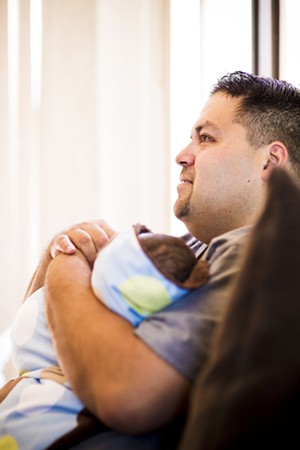
All kids test boundaries, though, Zatorski says, adding that foster families face unique challenges with any child they volunteer to care for. There are language barriers and development needs, or infants who simply won’t stop crying.
“It’s always something,” she says.
Legacy is choosy with the families it trains and certifies to foster children. It’s not a right fit for everyone, and some families don’t necessarily have the tools they need to become a part of the Legacy family. Zatorski says a foster family has to be a tree the child can depend on, one that provides protection and shade, one with branches that are a safe haven for someone who hasn’t yet had one in his or her life.
Zatorski’s job is to help both sides of the foster equation, to work through difficult situations with the families, to help set and reinforce rules, to provide training for the parents who need it and counseling when a child needs it, and to be a sounding board for people.
“I work with kids that have been traumatized in one way or another,” she says. “For me, working with that kind of population is a way to give back. Every child deserves a legacy; they don’t deserve to be ignored.”
Changing perception
The Rojas boys call Zatorski the Hulk, although she certainly doesn’t look like the Hulk. She has short brown hair with blonde highlights in it and wears a brown leather bracelet that has a huge sparkly gold square in the middle.
The boys are constantly interacting with her while she’s at the family’s home, showing her toys and giving her hugs. She’s a part of their family, just like everyone else in their life.
Zatorski has the ability to be sweet and strict at the same time, and she has a way with children, a connection. She calls her ability to comfort children who are upset a superpower.
“A child can be throwing a massive temper-tantrum and it will be de-escalated in 10 minutes,” she says. “I’m just good at it.”
At 17 years old, Zatorski joined the Army reserves and started an educational path that would lead her to gain a master’s degree in clinical mental health counseling. She hasn’t always worked with the segment of the population she does now, but she says helping foster families and the children who need them is the most satisfying work she’s ever done.
In mid-July, she’s moving with her family to Nebraska—she has four children and a husband in the military. Her replacement, Megan Glines, has already begun interacting with Legacy’s crew of families. Despite the fact that the Rojas family is going to miss interacting with Zatorski on a regular basis, Glines has already become a part of their family, too.
Once in Nebraska, Zatorski plans to continue working with foster children. While it’s difficult for her to break the connection she has with families such as the Rojases, movement has been a part of her life since she was a child. Her father was in the Air Force, so her family was constantly on the move, and migration is now a consistent part of her children’s lives. They’ve moved five times since she married her husband 12 years ago.
In the evolution of her adult life, one moment best explains her desire to work with foster children: When her family was living in New Mexico, Zatorski worked for a college success program geared toward children and teens. There was a 9-year-old boy she worked with who had been removed from his biological mother on three separate occasions. He had been in and out of the foster system for five years.
Her eyes start to glisten as she tells the story, but she keeps her voice steady. The boy knew the system’s ways, he knew what to say to get his foster parents into trouble, and he knew his mother was living on welfare. One day he told Zatorski that when he grew up he wanted to work at McDonald’s for minimum wage, live on welfare, and build a house in the woods so that no one could tell him what to do or take anything away from him.
“I was just like, ‘Wow,’” Zatorski says. “This kid was 9. He just had a lot of experiences that he never should have been exposed to.”
It took about a day for her to process the conversation she’d had with the boy and to figure out how she could try to change the perception of a child who had experienced so many traumas in his little life. She decided right then to show that little boy and children like him that there can be a life outside of the system they’ve found themselves in.
“That they don’t have to be known as a foster child, that they don’t have to be known as a ward of the state, that they can have their own identity,” she says.
Contact Staff Writer Camillia Lanham at [email protected].


